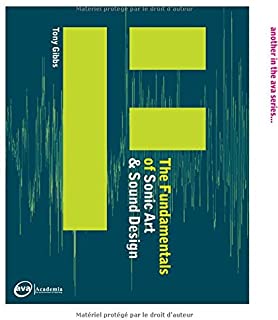Producing Music
Original price was: ₹4,199.22.₹3,359.38Current price is: ₹3,359.38.
ISBN: 9780415789226
Author/Editor: Russ Hepworth-Sawyer
Publisher: Routledge
Year: 2019
1 in stock (can be backordered)
Description
During the last two decades, the field of music production has attracted considerable interest from the academic community, more recently becoming established as an important and flourishing research discipline in its own right.
Producing Music presents cutting-edge research across topics that both strengthen and broaden the range of the discipline as it currently stands. Bringing together the academic study of music production and practical techniques, this book illustrates the latest research on producing music.
Focusing on areas such as genre, technology, concepts, and contexts of production, Hepworth-Sawyer, Hodgson, and Marrington have compiled key research from practitioners and academics to present a comprehensive view of how music production has established itself and changed over the years.
Additional information
| Weight | 0.93 kg |
|---|
Product Properties
| Year of Publication | 2019 |
|---|---|
| Table of Contents | Introduction What Is Design for Manufacture and Assembly? History Implementation of Design for Assembly Design for Manufacture Producibility Guidelines How Does DFMA Work? Falsely Claimed Reasons for Not Implementing DFMA What are the Advantages of Applying DFMA during Product Design? Overall Impact of DFMA on U.S. Industry Selection of Materials and Processes General Requirements for Early Materials and Process Selection Selection of Manufacturing Processes Process Capabilities Selection of Materials Primary Process/Material Selection Systematic Selection of Processes and Materials Problems Product Design for Manual Assembly General Design Guidelines for Manual Assembly Development of the Systematic DFA Methodology Assembly Efficiency Classification Systems Effect of Part Symmetry on Handling Time Effect of Part Thickness and Size on Handling Time Effect of Weight on Handling Time Parts Requiring Two Hands for Manipulation Effects of Combinations of Factors Effect of Symmetry for Parts that Severely Nest or Tangle and May Require Tweezers for Grasping and Manipulation Effect of Chamfer Design on Insertion Operations Estimation of Insertion Time Avoiding Jams during Assembly Reducing Disc-Assembly Problems Effects of Obstructed Access and Restricted Vision on Insertion of Threaded Fasteners of Various Designs Effects of Obstructed Access and Restricted Vision on Pop-Riveting Operations Effects of Holding Down Manual Assembly Database and Design Data Sheets Application of the DFA Methodology Further Design Guidelines Large Assemblies Types of Manual Assembly Methods Effect of Assembly Layout on Acquisition Times Assembly Quality Applying Learning Curves to the DFA Times Electrical Connections and Wire Harness Assembly Wire or Cable Harness Assembly Types of Electrical Connections Types of Wires and Cables Preparation and Assembly Times Analysis Method Design for High-Speed Automatic Assembly and Robot Assembly Design of Parts for High-Speed Feeding and Orienting Example Additional Feeding Difficulties High-Speed Automatic Insertion Example Analysis of an Assembly General Rules for Product Design for Automation Design of Parts for Feeding and Orienting Summary of Design Rules for High-Speed Automatic Assembly Product Design for Robot Assembly Printed Circuit Board Design for Manufacture and Assembly Design Sequence for Printed Circuit Boards Types of Printed Circuit Boards Bare Board Manufacture Terminology Assembly of Printed Circuit Boards Estimation of PCB Assembly Costs Case Studies in PCB Assembly Glossary of Terms Design for Machining Machining Using Single-Point Cutting Tools Machining Using Multipoint Tools Machining Using Abrasive Wheels Standardization Choice of Work Material Shape of Work Material Machining Basic Component Shapes Assembly of Components Accuracy and Surface Finish Summary of Design Guidelines Cost Estimating for Machined Components Design for Injection Molding Injection Molding Materials The Molding Cycle Injection Molding Systems Injection Molds Molding Machine Size Molding Cycle Time Mold Cost Estimation Mold Cost Point System Estimation of the Optimum Number of Cavities Design Example Insert Molding Design Guidelines Assembly Techniques Design for Sheet Metalworking Dedicated Dies and Pressworking Press Selection Turret Pressworking Press Brake Operations Design Rules Design for Die Casting Die Casting Alloys The Die Casting Cycle Die Casting Machines Die Casting Dies Finishing Auxiliary Equipment for Automation Determination of the Optimum Number of Cavities Determination of Appropriate Machine Size Die Casting Cycle Time Estimation Die Cost Estimation Assembly Techniques Design Principles Design for Powder Metal Processing Main Stages in the Powder Metallurgy Process Secondary Manufacturing Stages Compaction Characteristics of Powders Tooling for Powder Compaction Presses for Powder Compaction Form of Powder Metal Parts Sintering Equipment Characteristics Materials for Powder Metal Processing Contributions to Basic Powder Metallurgy Manufacturing Costs Modifications for Infiltrated Materials Impregnation, Heat Treatment, Tumbling, Steam Treatment, and Other Surface Treatments Some Design Guidelines for Powder Metal Parts Powder Injection Molding Design for Sand Casting Sand Casting Alloys Basic Characteristics and Mold Preparation Sand Cores Melting and Pouring of Metal Cleaning of Castings Cost Estimating Design Rules for Sand Castings Example Calculations Design for Investment Casting Process Overview Pattern Materials Pattern Injection Machines Pattern Molds Pattern and Cluster Assembly The Ceramic Shell-Mold Ceramic Cores Pattern Meltout Pattern Burnout and Mold Firing Knockout and Cleaning Cutoff and Finishing Pattern and Core Material Cost Wax Pattern Injection Cost Fill Time Cooling Time Ejection and Reset Time Process Cost per Pattern or Core Estimating Core Injection Cost Pattern and Core Mold Cost Core Mold Cost Pattern and Cluster Assembly Cost Number of Parts per Cluster Pattern Piece Cost Cleaning and Etching Shell Mold Material Cost Investing the Pattern Cluster Pattern Meltout Burnout, Sinter, and Preheat Total Shell Mold Cost Cost to Melt Metal Raw Base Metal Cost Ready-to-Pour Liquid Metal Cost Pouring Cost Final Material Cost Breakout Cleaning Cutoff Design Guidelines Design for Hot Forging Characteristics of the Forging Process The Role of Flash in Forging Forging Allowances Preforming During Forging Flash Removal Classification of Forgings Forging Equipment Classification of Materials Forging Costs Forging Die Costs Die Life and Tool Replacement Costs Costs of Flash Removal Other Forging Costs Nomenclature |
| Author | Russ Hepworth-Sawyer |
| ISBN/ISSN | 9780415789226 |
| Binding | Paperback |
| Edition | 1 |
| Publisher | Routledge |
You must be logged in to post a review.




Reviews
There are no reviews yet.